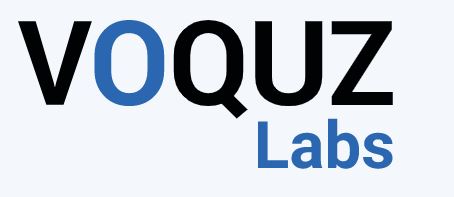SAP Access Control
Filter By
Browse By
- SAP Analytics and AI
- SAP Application Development and Integration
- All SAP Application Development and Integration
- SAP ABAP
- SAP ABAP Development Tools
- SAP ABAP Test Cockpit
- SAP API Management
- SAP BAPI
- SAP Basis
- SAP BRF
- SAP Business Application Studio
- SAP CMS
- SAP Design Studio
- SAP Development Tools
- SAP DevOps
- SAP EAI
- SAP EDI
- SAP Extension Suite
- SAP Fiori
- SAP Fiori Elements
- SAP Integration Suite
- SAP Low Code Application Development
- SAP Low Code Automation
- SAP Netweaver
- SAP Release Management
- SAP UI5
- SAP Web Application Server
- SAP Web IDE
- SAP Business Process Management
- SAP Center of Excellence
- SAP CIO
- SAP Customer Experience
- SAP Data and Data Management
- All SAP Data and Data Management
- SAP BW
- SAP BW/4HANA
- SAP Crystal Reporting
- SAP Data Archiving
- SAP Data Center
- SAP Data Governance
- SAP Data Integration
- SAP Data Migration
- SAP Data Quality
- SAP Data Services
- SAP Data Strategy
- SAP Data Visualization
- SAP Data Warehouse Cloud
- SAP DMS
- SAP Document Control
- SAP EIM
- SAP ETL
- SAP ETL Tools
- SAP HANA
- SAP HANA Administration
- SAP HANA Deployment Infrastructure
- SAP HANA Studio
- SAP Master Data
- SAP Master Data Governance
- SAP MDM
- SAP Enterprise Architect
- SAP Enterprise Asset Management
- SAP ERP
- SAP Finance
- All SAP Finance
- SAP Accounting
- SAP AR AP
- SAP Asset Accounting
- SAP Billing Systems
- SAP BPC
- SAP BRIM
- SAP Cash Management
- SAP Central Finance
- SAP Controlling
- SAP COPA
- SAP Cost Center Accounting
- SAP e-invoicing
- SAP FICO
- SAP Finance Automation
- SAP Financial Closing Cockpit
- SAP Financial Consolidation
- SAP Financial Planning
- SAP FX Risk
- SAP General Ledger
- SAP Global Tax Management
- SAP Hyperion
- SAP Order to Cash
- SAP Payment Processing
- SAP Profitability Analysis
- SAP Rebate Management
- SAP S/4HANA Finance
- SAP Universal Journal
- SAP Governance Risk and Compliance
- SAP Human Capital Management
- SAP Intelligent Technologies
- SAP Platform and Technology
- All SAP Platform and Technology
- SAP Business Technology Platform
- SAP Cloud Connector
- SAP Cloud Integration Platform
- SAP Cloud Migration
- SAP Cloud Platform
- SAP Cloud Providers
- SAP Cloud Strategy
- SAP Container Platform
- SAP Digital Asset Management
- SAP Digital Integration Hub
- SAP Digital Signature
- SAP HANA Enterprise Cloud
- SAP HEC
- SAP Hyperscalers
- SAP Infrastructure
- SAP Messaging
- SAP Smart Forms
- SAP Quality and Testing
- SAP Security
- SAP Spend Management
- SAP Supply Chain Management
- All SAP Supply Chain Management
- SAP APO
- SAP Asset Management
- SAP Business Network
- SAP Digital Manufacturing Cloud
- SAP Digital Twin
- SAP EWM
- SAP IBP
- SAP Inventory Management
- SAP Label Printing
- SAP Logistics
- SAP Manufacturing
- SAP Manufacturing Automation
- SAP MES
- SAP MII
- SAP MM
- SAP MRO
- SAP MRP
- SAP Order Management
- SAP Plant Maintenance
- SAP PLM
- SAP Production Planning
- SAP S&OP
- SAP SD
- SAP SPM
- SAP Supply Chain Planning
- SAP Track and Trace
- SAP Transportation Management
- SAP System Administration
What is SAP Access Control?
Improper access is a major security threat to SAP and other enterprise systems. The issue only gets worse as employees increasingly access their relevant applications remotely and on varying, often personal, devices. The goal of SAP Access Control is to ensure the right people are using the right software from the right device. It also helps track access information in case it needs to be reported later for compliance purposes or assessed for risk.
SAP Access Control’s key functions include:
- Risk analysis
- User provisioning
- Monitoring privileges
- Certifying authorizations
- Integration with enterprise systems
- Role definition and maintenance
Key SAP Access Control Considerations for SAPinsiders
What is SAP Access Control?
Improper access is a major security threat to SAP and other enterprise systems. The issue only gets worse as employees increasingly access their relevant applications remotely and on varying, often personal, devices. The goal of SAP Access Control is to ensure the right people are using the right software from the right device. It also helps track access information in case it needs to be reported later for compliance purposes or assessed for risk.
SAP Access Control’s key functions include:
- Risk analysis
- User provisioning
- Monitoring privileges
- Certifying authorizations
- Integration with enterprise systems
- Role definition and maintenance
Key SAP Access Control Considerations for SAPinsiders
- Quantify how improving user access and identity management impacts the bottom line. Most governance, risk, and compliance (GRC) organizations surveyed for our recent User Access and Identity Management for SAP S/4HANA report are facing budget constraints. That can make it hard to invest in software like SAP Access Control, but you can build the business case by finding those areas where unauthorized access can be costly. Added costs can come from cyberattacks, fraud, compliance-related fines, and rework to address audit issues. The cybersecurity threats are real — over a quarter of respondents noted having an access-related security breach in our April 2021 Securing the SAP Landscape Against Cyber Threats report.
- Audit your user access landscape. First, gain an understanding of which users are accessing which systems and why. Then, survey your users and identify which roles need which systems. These steps can help you be more efficient in integrating your access across your technology footprint.
- Integrate user access and identity management across your technology stack as part of your migration. Respondents to our latest User Access and Identity Management survey who worked for leading organizations were much more likely to integrate user access and identity management as part of digital transformation and integrate identity management across their heterogeneous application landscapes. These actions can help you optimize investment in software like SAP Access Control and create a holistic user access and identity management strategy.
- Centralize user access and identity processes to maximize your next technology investment. Centralizing user access and identity management can provide benefits that reduce risk, enable compliance, and make securing your systems easier. However, you must first unify the process by which you identify users and grant access to systems, no matter the business area or solution. That will make any technological investment more valuable when implemented.
70 results
-

Manage Identities and Optimize Compliance with SAP Cloud Identity Access Governance
Published: 12/January/2017
Reading time: 12 mins
SAP Cloud Identity Access Governance provides real-time access governance and continuous monitoring of user access by immediately calculating the access analysis results as a background activity. Organizations can choose one or all of the services of SAP Cloud Identity Access Governance, depending on their business needs. It can easily be extended across the enterprise as…...…
-

Live Q&A: Take the stress off your SAP Access Control 10.1 implementation
Published: 01/January/2017
Reading time: 24 mins
Get answers to your questions on SAP Access Control 10.1 implementations, from budget and personnel resources to common pain points and blueprinting best practices. Meet the panelist: Dylan Hack, Deloitte & Touche, LLP Dylan Hack is a Manager with Deloitte & Touche, LLP. He has 15 years of SAP project experience with global clients in…
-

Manage Invalid Mitigations in SAP Access Control 10.1
Published: 16/December/2016
Reading time: 9 mins
Learn about the different aspects and flexibility of risk mitigations in SAP Access Control 10.1. Access risk mitigation is used to mitigate access risk violations. It is applicable for all types of risks for different objects such as users, roles, profiles, and HR objects (job, org unit, and position) in SAP Access Control. Access risk…...…
-
-

Debunking Access Control Myths
Published: 10/October/2016
Reading time: 3 mins
When it comes to access control, there are a lot of inaccuracies and misunderstandings floating around. And when these misunderstandings go unchallenged, they can cost businesses significant amounts of money and time. So how can you cut through these falsehoods and implement an access control strategy that’s based on truth? This article helps you get…
-

Live from SAPinsider Studio: Citrix Systems on SAP Access Violation Management by Greenlight
Danielle Bass of Citrix Systems discusses her company’s use of SAP Access Violation Management (AVM) from Greenlight Technologies with Susan Stapleton of Greenlight at the 2016 SAPinsider GRC event in Las Vegas. This is an edited version of the transcript: Susan Stapleton, Greenlight Technologies: Hi, I’m Susan Stapleton with Greenlight Technologies. We’re here at the…
-

SAP HANA Security: Preventing the Internal Threat
Published: 15/March/2016
Reading time: 3 mins
Audio pioneer Dolby Laboratories, which has been delivering audiophiles a superior sound and sight experience since the 1970s, decided in 2016 that it wanted an equally stringent level of quality assurance for its business process testing. The business sought a risk-based automated testing solution to reduce or eliminate regression test coverage gaps and lengthy testing…
-

Make the Best Use of Training Verification Functionality in SAP Access Control
Published: 03/March/2016
Reading time: 10 mins
Nitin Aggarwal and Sanjeev Kotwal show how to use the training verification functionality in SAP Access Control to automate the training check in the user access provisioning process. Key Concept SAP Access Control is used to provision roles or profiles to users in back-end systems in a compliant way. Every request for access submitted in…...…
-
-

Role Certification in SAP Access Control 10.0
Published: 08/February/2016
Reading time: 7 mins
Learn about the different aspects and flexibility of role management in SAP Access Control 10.0. Business Role Management, commonly known as BRM, is used to create and manage different types of roles in SAP Access Control. Key Concept Role certification is the process by which an administrator can notify role owners to recheck the roles…...…
-

SAP Access Control Implementation: The Myth, Truth, and Tricks (Part 2)
Published: 04/January/2016
Reading time: 20 mins
Correct certain assumptions about the SAP Access Control system that are not necessarily true and obtain guidance on how to meet specific complex business requirements during an implementation project, including maintenance and support activities.
-

SAP Access Control Implementation: The Myths, Truths, and Tricks (Part 2)
Published: 04/January/2016
Reading time: 21 mins
Correct certain assumptions about the SAP Access Control system that are not necessarily true and obtain guidance on how to meet specific complex business requirements during an implementation project, including maintenance and support activities. Key Concept Myth is often the result of wishful thinking about the capability of a product that most times is unfounded…....…
Featured Experts
-

Akash Kumar
Associate General Manager, HCL
Become a Member
Unlimited access to thousands of resources for SAP-specific expertise that can only be found here.
Upcoming Events
Related Vendors
Your request has been successfully sent


